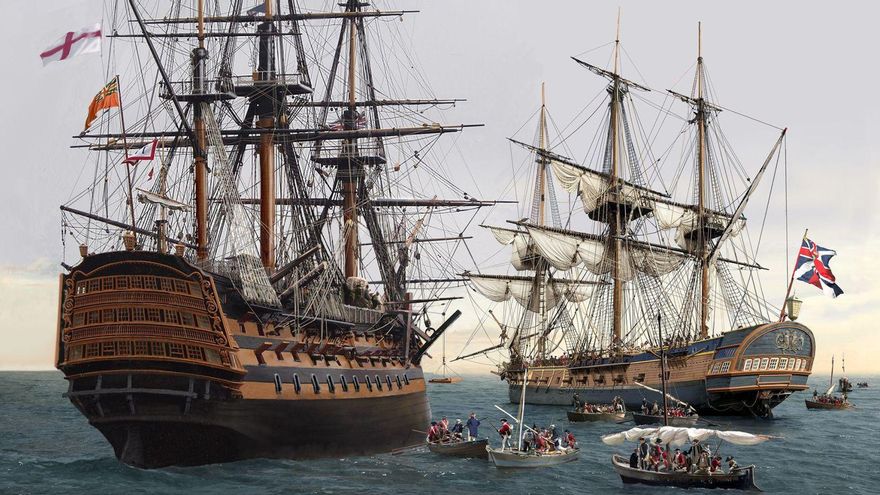
The anchor of HMS Theseus, located in the gardens in front of the Navy Command, at the confluence of Avenida Francisco La Roche and Rambla de Santa Cruz, belonged to the flagship of the British squadron commanded by Rear Admiral Horacio Nelson, formed by four ships of the line, three frigates, a cutter and a bombard, with 2,000 men and 393 cannons when, on the historic date of July 25, 1797, they tried to seize the Plaza Fuerte de Santa Cruz, with the intention of later seizing the Island of Tenerife and the rest of Canary Islands.
This valuable specimen is considered an Admiralty Anchor, because, according to historian Daniel García Pulido, it belonged to HMS Theseus and not to any other of the many ships that frequented the Santa Cruz roadstead at that time, upon finding in the newspaper of navigation that: «On Monday, July 24, at half past five, we anchored to the East of Santa Cruz, at a depth of 42 fathoms, with the best bow anchor (…) On Tuesday, July 25, due to the winds strong ENE and the opposite current, we had to cut the anchor cable and set sail, given the imminent danger of enemy fire from a battery of three cannons, located on the coast».
The aforementioned, also confirmed by Spanish documentary sources, certify how the HMS Theseus, faced with the incessant fire from the nearby batteries, was forced to abandon its anchorage, having to bite the anchor cable, losing it at the bottom of the roadstead, being drifted by sea currents towards Saint Andrewwhere it would be the object of new cannon shots made from the tower located there.
The aforementioned historian, through reproductions, diagrams and drawings, has compared their similarity with the anchors used by the Royal Navy at the end of the 18th century and the beginning of the 19th century, noting that their linear measurements, the arms and cross scheme, coincide. the morphology, the materials used in its manufacture and its weight, of 1,895 Kilograms.
In addition, the aforementioned anchor coincides with one of those exhibited in the gardens of the National Maritime Museum in Greenwich (London).
Recovery
The anchor of the Theseus was accidentally extracted from the sandy bottom of the Anaga basin of the Port of Santa Cruz de Tenerife in 1967, by the Spanish Navy ship Plutón, being offered to the Naval Museum of Madrid, which would provide that the aforementioned anchor should remain in Tenerife, having belonged, very likely, to one of the ships of the squadron of the Admiral Nelson.
Then, the Board of Works of the Port enthroned her in the gardens located in front of the Navy Command building, at the confluence of Avenida Francisco La Roche and Rambla de Santa Cruz, after having restored her wooden stocks.
Curiously, on the fiftieth anniversary of its discovery in the waters of the Port of Santa Cruz de Tenerife, the wood with which the arms and the anchor cross had originally been made fragmented, leaving them in a lamentable state.
The Port Authority of Santa Cruz de Tenerife would be in charge of carrying out its restoration, placing it again on a magnificent pedestal covered with chasnera stone, built for that purpose, since it was previously planted on the ground. A plaque was placed at its base with an explanatory legend of its history.
















